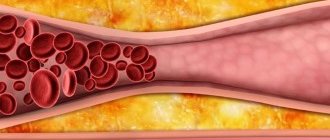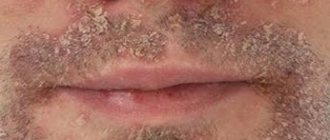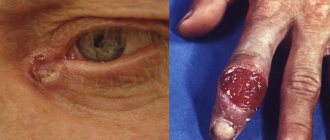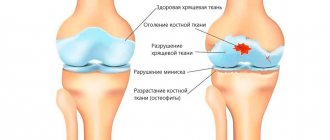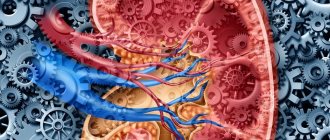Delirium is a disease, psychosis, that combines delusions and hallucinations - visual, auditory and tactile. A person in such a state behaves extremely inappropriately and can pose a serious danger to himself and others. Delirium usually occurs due to disorders associated with various brain and general diseases, as well as under the influence of chemical substances.
Concept and types of delirium
The word “delirium” is Latin for “delirium” or madness.” The term was first used in Ancient Rome in the 1st century AD. Delirium is an acute, mostly reversible condition that affects attention, impairs perception, and reduces the level of consciousness. It is worth clearly distinguishing delirium from schizophrenia and bipolar disorder - these are fundamentally different things. An important difference is the treatability of delirium and the mandatory presence of a provoking factor in the anamnesis. The syndrome is a neurocognitive disorder and is considered a pressing medical problem. It is often encountered in medical practice and can lead to the death of a person.
Literature:
- Alcoholic delirium and delirious-oneiric psychoses of complex structure. K.G. Danielyan. / Yerevan: Hayastan, 1977. - 132 p.
- Emergency diagnosis and methods of relieving alcoholic delirium, withdrawal syndrome and convulsive paroxysms: Method. recommendations / Kharkiv. Research Institute of Neurology and Psychiatry; [N. I. Protasevich and others]. - Kharkov: B. i., 1988. - 13 p.
- Cognitive deficits in patients with alcoholic delirium. Berezkin A.S., Govorin N.V., Simbirtsev A.A. / Russian Psychiatric Journal 2021
Need some advice?
OR CALL A DOCTOR
CALL!
+7
Common types of disorder depending on the underlying cause
- Psychopharmacological.
Caused by taking drugs, mainly psychotropic drugs. Neuroleptics in combination with anticholinergics, antihistamines or beta-blockers can also lead to the condition - Organic.
Triggered by pathology of the nervous system, for example: malignant or benign formation in the brain, subarachnoid bleeding, abscess - Drug or alcohol.
Associated with alcohol (popularly called delirium tremens), opiates, barbiturates, hashish. Often occurs as a withdrawal syndrome - Infectious.
Occurs against the background of pneumonia, infectious brain damage, colds, systemic pathologies - Hormone.
Symptoms are usually associated with a thyroid disorder (hypothyroidism, hyperthyroidism) - Vascular.
Acute reaction to tachycardia or bradycardia, heart failure, anemia, shock conditions - Traumatic.
Due to brain injury - Geriatric.
Geriatrics are conditions characteristic of old people. Delirium of various etiologies is often detected in old age due to a slowdown in the body's metabolic processes - Postoperative.
It is often discovered after bypass surgery or surgical correction of valves. Prolonged stay on mechanical ventilation increases the likelihood of developing the condition.
There are other possible reasons: a sudden change in the environment, urinary retention, recent surgery. A deficiency of certain substances can also lead to aggression and delirium. Most often, this is caused by an insufficient amount of B vitamins. Sometimes a combination of reasons leads to the development of delirium: infection with pneumonia due to alcohol withdrawal, a combination of alcoholic beverages and medications, intoxication due to chronic heart pathologies.
Treatment in hospital
In case of mental disorder, urgent hospitalization is indicated. To remove the effects of an ethanol attack, the patient is given a cleansing drip. It helps normalize water and electrolyte balance, eliminates manifestations of hypovitaminosis, dehydration, and intoxication.
Doctors use neurometabolic stimulants to support the brain. These are drugs that enhance metabolism in brain tissue. They have a positive effect on focus, memory, and thinking processes.
Means for correcting mental disorders are selected on an individual basis. These can be sedatives, hypnotics, psychotropics, antidepressants.
It is important that the alcohol addict strictly follows all the prescriptions of the narcologist and psychiatrist. Only then can one count on obtaining positive dynamics.
Symptoms of the syndrome
To establish a diagnosis, the patient is admitted to a hospital for the purpose of a formal assessment of mental status. When making a diagnosis, three repetition tests are used. Testing and behavioral monitoring can help identify symptoms of delirium. These include:
- Manifestations of clouding of consciousness. Expressed in a violation of perception and cognition of the surrounding world. They suggest detachment from what is happening, incoherent judgment, meaningless speech, slow reactions, disorientation, complete or partial loss of memory.
- Hallucinations. The intensity of visual images that occur without external stimuli depends on the causes of delirium. The most vivid delusional pictures that distort real life are characteristic of withdrawal syndrome, delirium tremens, and hysteria. May manifest in different forms, depending on the patient; some see those same little green men, others see insects or strangers. Illusions on religious themes are not uncommon.
- Unusual motor activity. Manifested by excitement and reproduction of various actions. Sometimes the patient may think that he is at his workplace and perform characteristic movements.
- Inarticulate muttering (delirium delirium). Occurs in patients with infectious diseases, brain damage, and recovery after surgery. Accompanied by hand movements, speech contact is impossible. Sometimes it manifests itself in an abortive form - lasts less than a day and is not accompanied by disorientation.
- Tremor and tic. The anxiety state is aggravated, random movements gradually become constant and obsessive.
- Change in facial expressions. The mental state can be determined by increased emotionality, pantomime and a characteristic grotesque facial expression.
- Strange behavior. In patients, delirium can cause panic, uncontrollable anger, prolonged laughter, tears, sexual arousal, and screaming.
- Sleep disturbance. There are difficulties falling asleep, nightmares, and some fear of sleep.
The clinical picture depends on the etiology of the syndrome. Diagnosis of the condition can only be carried out by specialists. Often the manifestations are similar to those of other diseases, for example, dementia occurs in a similar way.
Useful information about the disease
Delirium tremens is the most common type of alcoholic psychosis. As a rule, it occurs for the first time after seven to ten years of chronic drunkenness. But sometimes pathology develops in people who do not suffer from alcoholism.
It is important to know that signs of delirium appear several days after drinking the last dose of alcohol. They never occur in addicts who are intoxicated. Therefore, if a drunk person destroys everything in his path, the matter is definitely not “delirium tremens”.
As a rule, the pathology is accompanied by a high level of aggression. However, it also happens that the patient, on the contrary, becomes unusually polite, sociable, and smiling. He tries to do something good for those around him - bury a non-existent hole in the middle of the road, destroy aliens, etc.
In any case, it is not safe to be around such a person. Even if it seems that he is absolutely harmless, it is impossible to predict his further behavior. It can only take a few minutes to go from smiling to uncontrollable rage. That is why narcologists insist on inpatient treatment for patients with the described diagnosis.
Treatment options for delirium
Treatment of delirium involves an integrated approach aimed at getting rid of the cause and stopping behavioral disorders. There are medical non-drug and pharmacological methods of therapy. Typical use:
- Non-drug methods. The group includes various psychotherapeutic techniques, cognitive stimulation, and verbal techniques. Communication with family and loved ones plays an important role. It is recommended to maintain a balance between stimulation and calming: it is advisable to reduce any stimulating actions to a minimum.
- Drug therapy is common. The classic scheme involves the use of antipsychotics, antidepressants, and sedatives. Combinations, dosages and prescriptions are related to etiology.
Some forms of delirium (pharmacological, alcoholic, drug) should be treated without drugs or with a limited number of drugs. Excess chemicals can worsen psychosis.
Delirium in old age
Delirium is a common clinical syndrome characterized by confusion and “acute cognitive dysfunction.” The word "delirium" was first used as a medical term in the first century AD to describe mental disorders that occur during fever or head injury. Doctors tried to describe delirium with the following terms: “acute confusion”, “acute cerebral failure”, “toxic metabolic encephalopathy”, etc. Over time, delirium began to be understood as a short-term, reversible syndrome, which is partly acute in its occurrence and flickering in its symptoms.
Clinical experience and recent research have shown that delirium can become chronic or fatal. In older patients, delirium may be a key component in the cascade of events that lead to a downward spiral of “functional decline” and ultimately death.
The overall prevalence of delirium in the general population is only 1-2%. Postoperative delirium occurs in 15%-53% of surgical patients over 65 years of age, and among elderly patients admitted to the intensive care unit, the incidence of delirium can reach 70-87%.
Delirium affects, according to experts, from 14% to 56% of all elderly patients hospitalized in psychiatric hospitals. At least 20% of the 12.5 million patients over 65 years of age who are admitted to U.S. psychiatric hospitals each year have complications during their hospitalization due to delirium.
The causes of delirium are varied and they often reflect the pathophysiological consequences of an acute medical illness, drug effect or complications. In addition, delirium develops due to a complex interaction between various risk factors. The development of delirium often depends on a combination of predisposing, as if background, factors, such as underlying dementia or severe medical illness, and the acceleration of delirium on frequently changing factors, such as the use of sedatives, infections, abnormal test results, or surgery. Among older patients, one of the most important risk factors for delirium is dementia (two thirds of all cases of delirium in this age group occur in patients with dementia). Research has shown that delirium and dementia are associated with decreased cerebral blood flow or metabolism, cholinergic deficits, and inflammation, and these similar etiologies may explain the close relationship between these pathophysiological factors.
Potentially changing risk factors for delirium
- Sensory impairments, such as auditory or visual
- Immobilization (catheters or restraints)
- Medications (eg, sedative-hypnotics, narcotics, anticholinergics, corticosteroids, polypharmacy, alcohol or other drug withdrawal)
- Acute neurological diseases (for example, acute stroke - usually right parietal, intracranial hemorrhage, meningitis, encephalitis)
- Intercurrent illnesses (eg, infections, iatrogenic complications, severe acute medical illness, anemia, dehydration, poor nutrition, fractures or trauma, HIV infection)
- Metabolic disorders
- Surgical interventions
- Environment (eg, intensive care unit admission)
- Pain
- Expressed emotional feelings
- Moderate sleep insufficiency (deprivation)
Permanent risk factors
- Dementia or cognitive impairment
- History of delirium, stroke, neurological disease such as ataxia
- Multiple comorbidities
- Male
- Chronic renal or liver failure
Age > 65 years
Current evidence suggests that drug toxicity, inflammation, and acute stress reactions may contribute significantly to disruption of central nervous system neurotransmission and ultimately to the development of delirium. Systemic inflammation may result from systemic infection, trauma, or surgery. The cholinergic system plays a key role in cognitive function and it is therefore not surprising that there is extensive evidence supporting the role of cholinergic deficits in the genesis of delirium. Anticholinergic drugs can cause delirium and often contribute significantly to the delirium observed in hospitalized patients. Increased acetylcholine levels due to the use of cholinesterase inhibitors such as physostigmine can cause delirium. Serum anticholinergic activity, which reflects the anticholinergic effects of both endogenous and exogenous drugs and their metabolites, has been shown in some studies examining the dynamics of delirium. Other neurotransmitter abnormalities associated with delirium include increased dopaminergic brain activity and a relative imbalance between the dopaminergic and cholinergic systems. The use of antiparkinsonian drugs can also cause delirium, and dopamine antagonists such as haloperidol are effective in treating symptoms of delirium. The neurotransmitters glutamate, γ-aminobutyric acid, 5-hydroxytryptamine (5-HT), and norepinephrine have also been suggested to be associated with delirium.
- Delirium is a common cause and serious complication of hospitalizations and has important consequences for the patient, both functionally and economically.
- Delirium is potentially preventable and treatable, but major barriers, including underestimation of the severity of the syndrome and poor understanding of its underlying pathogenesis, have hampered the development of successful treatments
- Neuroimaging has revealed structural changes in delirium, including cortical atrophy, ventricular dilatation, and white matter lesions, which may be considered both predictors of delirium and its consequences.
- Evidence suggests that impaired neurotransmission, inflammation, or acute stress reactions may contribute to the development of delirium
- Delirium is not always short-lived or reversible and may lead to long-term cognitive changes
There is experimental and clinical evidence to suggest that trauma, infection, or surgery may lead to increased production of proinflammatory cytokines, which may precipitate delirium in sensitive patients. Peripherally secreted cytokines can provoke exaggerated responses from microglia, thereby causing significant inflammation in the brain. Proinflammatory cytokines can significantly influence the synthesis or release of acetylcholine, dopamine, norepinephrine and 5-HT, thereby disrupting neuronal communication and they can also have direct neurotoxic effects. In addition, pro-inflammatory cytokine levels have been shown by a number of researchers to be elevated in patients with delirium. delusional. The presence of low-grade inflammation associated with chronic neurodegenerative changes in the brains of patients with dementia may explain why these patients are at increased risk of delirium. The importance of high cortisol levels associated with acute stress has been suggested for the onset and/or maintenance of delirium. Steroids may cause deterioration of cognitive function (steroid psychosis), although not all patients receiving high doses of steroids will develop delirium. In elderly patients, cortisol feedback regulation may be impaired, resulting in higher baseline cortisol levels and thereby predisposing this population to delirium. A number of studies have found elevated cortisol levels in patients who developed postoperative delirium. Other studies have found an abnormal decrease in cortisol in a dexamethasone suppression test, a result that indicates dysregulated cortisol leading to increased cortisol levels in patients with delirium. The role of cortisol in the development of delirium, however, deserves further study. Delirium associated with direct neuronal damage can be caused by various metabolic or ischemic brain lesions. Hypoxia, hypoglycemia and various metabolic disorders can cause energy deprivation, which leads to disruption of the synthesis and release of neurotransmitters, as well as disruption of the propagation of nerve impulses along the nerve networks involved in the processes that ensure the functioning of the cognitive sphere. In elderly patients with delirium of various etiologies, imaging showed cortical atrophy in the prefrontal cortex, temporal cortex in the nondominant hemisphere, and atrophy of deep structures, including the thalamus and basal ganglia. Other features that are observed on imaging include: ventricular dilatation, white matter changes, and basal ganglia lesions. These changes likely reflect a state of increased vulnerability of the brain to any negative impact and an increased susceptibility to the development of delirium. A number of studies, however, have not identified any significant abnormalities in CT scans of patients with delirium. To date, relatively few studies have used functional imaging to examine brain changes in delirium. One prospective study of hospitalized patients with delirium of various etiologies used single photon emission tomography (SPECT) and found frontal and parietal hypoperfusion in half of the patients. Other studies that have used SPECT imaging, primarily in patients with hepatic encephalopathy (a form of delirium caused by liver failure), have identified various types of hypoperfusion, including involvement of the thalamus, basal ganglia, and occipital lobes. In one study with Xenon-enhanced CT, global perfusion was decreased during delirium. Rapid progress in the development of neuroimaging technologies offers exciting prospects for the use of new methods to elucidate the mechanisms of delirium. These techniques include volumetric MRI, which may be useful in assessing the rate of brain atrophy following delirium or determining threshold levels of atrophy that predispose patients to delirium. Diffusion tensor imaging and tractography can help assess damage to the fibers of neural tracts that connect different areas of the brain. Arterial spin perfusion measures blood flow and can be used to assess both cerebral perfusion and response to medications. MRI can also be used to assess the integrity of the blood-brain barrier and its role in the development of delirium. It appears that the symptoms of delirium are quite variable, but it can be classified into three subtypes - hypoactive, hyperactive and mixed - based on the characteristics of psychomotor behavior. Patients with hyperactive delirium show signs of restlessness, agitation, and increased anxiety and often experience hallucinations and delusions. In contrast, patients with hypoactive delirium, accompanied by lethargy and sedation, are slow to respond to questions and show limited spontaneous activity. The hypoactive form is most common in older patients, and these patients are often overlooked or misdiagnosed as having depression or a particular form of dementia. Patients with mixed delirium exhibit both hyperactive and hypoactive features. It has been suggested that each subtype of delirium may result from a distinct pathophysiological mechanism and that each variant of delirium may have a different prognosis.
General diagnostic criteria for delirium
- (A) Impaired consciousness (i.e., decreased clarity of awareness of the environment) with decreased ability to focus, maintain, or shift focus of attention
- (B) Cognitive changes (eg, memory deficits, confusion, speech impairment) or development of perceptual impairments that are not associated with dementia
- (C) The disorder develops over a short period of time (usually hours to days) and typically fluctuates in severity throughout the day
Criteria for delirium that has developed due to deterioration in general health
- (D) Evidence from history, physical examination, or laboratory testing indicates that the disorder is caused by direct physiological effects of general health conditions
For delirium due to substance intoxication
- (D) Evidence from history, physical examination, or laboratory testing indicates that either (1) symptoms in criteria A and B are due to substance intoxication, or (2) drug use is etiologically related to delirium
For delirium, "multiple" etiologies
- (D) History, physical examination, or laboratory tests indicate that delirium has more than one etiology
Postoperative delirium may develop on the first or second postoperative day, but the patient is often hypoactive and therefore may go undetected. Delirium is difficult to recognize in the intensive care unit because standard cognitive tests of attention are often not used because patients are intubated and unable to answer questions verbally.
Progression and consequences of untimely treatment
Delirium and the behavioral abnormalities it causes appear suddenly. The patient's age, health status, causes and nature of manifestations should be taken into account. The progression of symptoms such as restlessness, hallucinations, and anxiety depends on the nature of the syndrome. With alcoholic, psychopharmacological or drug delirium, the condition worsens rapidly. The patient exhibits cardiovascular system disorders, blood pressure fluctuations, and large-scale tremor. No less dangerous is rapidly developing delirium of an infectious nature. It is accompanied by fever, chills, and intoxication. Damage to the body by infection leads to the development of an inflammatory process, leading to improper functioning of organs and systems.
Older people are more likely to experience slow progression of delirium. This leads to the development of complications, increased cost of treatment, and profound impairment of cognitive function. There is a risk of incomplete physical recovery and some memories never return. In the next two years, death is more likely. However, if you consult a doctor in a timely manner, the prognosis is mostly favorable. The lack of competent therapy can lead to rapid deterioration of conditions, complications or even death.
Recovery from delirium
Delirium can last from one day to several months. If the patient's health improves, the patient may go home before the delirium subsides. In some cases, delirium symptoms improve after returning home. In other cases, patients may remain distracted and forget the date or where they are for several months after the cause of delirium has been resolved.
Your doctor, nurse, social worker, and case manager can help you plan your care at home.
Call your doctor or nurse if you have questions or concerns. to come back to the beginning
Stationary
The first aid for delirium is 24-hour hospitalization. In Moscow and other Russian cities, doctors are successfully fighting the condition and its consequences. Recovery is mainly achieved through a combination of medication and psychotherapy. The following stages are expected:
- Detecting causes and prescribing appropriate therapy;
- Minimizing the amount of medications taken;
- Detoxification is carried out if necessary;
- Creating a favorable and calm environment;
- Relieving disorientation in space, time and society;
- Drawing up a recovery plan for the body.
Before starting therapy, it is necessary to diagnose the brain using X-rays. The method of magnetic resonance or computed tomography allows identifying a condition of traumatic, organic etiology, as well as vascular, the treatment of which is important to begin immediately. Additionally, it is necessary to conduct a general blood and urine test. Laboratory tests make it possible to assess the patient’s condition, detect intoxication, inflammation, and symptoms of renal failure. The department of the hospital that treats delirium becomes specialized for the main diagnosis: narcology, gastroenterology, urology, nephrology.
Securing the patient should be strictly avoided. This leads to aggravation of the stage, the patient suffers and becomes nervous. Limb binding is used only in cases of life-threatening situations (suicide attempt) or during periods of aggression.
What will happen if left untreated?
Delirium caused by chronic alcoholism can lead to:
- acute cardiovascular failure;
- intestinal paresis;
- hyperthermia;
- cramps, muscle paresis;
- enuresis;
- uncontrolled bowel movements;
- disability;
- lethal outcome.
Even if the patient receives medical help in a timely manner and manages to avoid complications, this does not mean that he can continue to drink. Having experienced alcohol psychosis once, a person runs the risk of encountering it again soon. And for this it is not at all necessary to go into a state of multi-day binge - a single dose of alcohol may be enough.
Methods for correcting behavioral deviations due to the syndrome
- Timely changes in diet (refusal of foods that cause drowsiness or alertness), discontinuation of psychostimulant drugs. Creating a favorable and calm atmosphere. Refusal of medications that can be avoided at this stage. In case of persistent sleep disturbance, take sedative medications.
- Illusions, delusions, auditory and visual hallucinations. Symptoms require the use of antipsychotics (aloperidol, chlorpromazine, clozapine)
- Increased emotionality in delirium. Psychotherapy usually helps. If the patient has become depressed, then it is permissible to use mood stabilizers or antidepressants.
- Excessive excitement. Recovery is facilitated by the presence of loved ones. Fixation of the limbs leads to aggravation of the condition. Possible use of sedatives or antipsychotics
- Confusion. In most cases, setting reference signals helps. For example, a clock, a calendar, familiar objects. The patient is forced to count, characterize shapes, name the days of the week
- Anxiety. Benzodiazepines are used. If the course of the disease is complicated by psychotic disorders, then antipsychotics are recommended.
The acute stage of delirium lasts about 2 weeks. Improvement is evidenced by sound, healthy sleep. The patient often treats the incident as a nightmare or does not remember anything.
Principles of therapy
Delirious mental disorder associated with alcohol abuse requires mandatory hospitalization. You should contact the clinic either at the prodromal stage of the disease, or when initial symptoms appear.
Treatment of alcoholic delirium in a hospital
The goals of therapy are:
- Correction of sleep disorders.
First of all, attention is paid to strict control of the daily routine, eliminating the influence of stimulating factors. Sleeping pills are used with caution, in minimal doses, to avoid complications. - Elimination of psychotic disorders.
For this purpose, modern, safer (compared to the previously used haloperidol and chlorpromazine) atypical antipsychotics are used. These same drugs also help cope with excessive psychomotor agitation. - Reducing confusion.
To avoid prescribing unnecessary drugs, they resort to non-drug methods. They organize constant lighting (softer at night), hang a calendar and a clock so that the patient can navigate in time. - Reduced anxiety.
Benzodiazepines are prescribed (in a low dose), and if necessary, antidepressants are selected. - Elimination of concomitant pathologies.
Medicines are used to restore the functions of the hepatobiliary system, correct cardiac disorders, means to stimulate metabolism, vitamins, and enzymes.
Prevention
Of course, the best prevention of alcoholic delirium is treatment of alcoholism in the early stages. But if there is already a problem of binge drinking, you should contact a narcologist to interrupt alcohol excess. As a rule, withdrawal from binge drinking, when there are no symptoms of delirious disorder, is carried out at home and takes only a few hours.
In addition, you should definitely discuss with your doctor all ways to get out of this situation. Most modern clinics offer the possibility of motivational intervention, a variety of effective methods for motivating an addict to treat alcoholism, and effective rehabilitation programs.
Dangers of self-medication for delirium
Not all patients with delirium tremens or other types of delirium rush to seek help. On the Internet you can find a lot of advice on how to get rid of the signs of the condition: detachment, loss of orientation, chaotic movements, hallucinations. Self-medication using an algorithm from a random site can negatively affect health or life in the following ways:
- It is difficult or impossible to establish the causes without a specialist. The course of delirium can differ significantly from the description: sometimes a number of signs are completely absent. Even with severe symptoms, diagnostic procedures are required.
- Sometimes psychosis develops rapidly. The condition is characterized by a high rate of progression. Delay may result in lost functions not being restored or causing death. Psychosis accompanied by a suicide attempt is not uncommon.
- Only by receiving professional help can you cope with the disorder. As a result of improper therapy, manifestations become intense and irreversible. If treated correctly, restoration of activity takes at least 6 months after the condition has resolved.
- The symptoms of delirium are similar to other diseases. Sometimes behind the appearance of a sign there are other dangerous pathologies.
- Delirium can accompany life-threatening conditions. Detection of the process is often associated with myocardial infarction, stroke, hypoglycemia, and poisoning.
- Psychosis is fraught for others. Alcoholic delirium is considered the most dangerous. When it is repeated, patients show hatred towards others and are even capable of murder.
Considering all the dangers of self-medication, the main thing is to immediately seek medical help.
What is delirium tremens
Alcoholic delirium (delirium tremens) accounts for 70% to 90% of all psychoses in alcoholism. It occurs, as a rule, after a long binge at the height of withdrawal, or hangover, syndrome.
The main manifestations of delirium include:
- perception disorders in the form of true visual illusions and hallucinations (less often - auditory, tactile, gustatory);
- figurative delirium;
- mood lability;
- motor excitement;
- violation of the patient’s orientation in time and in the surrounding space while maintaining self-awareness.
The clinic of alcoholic delirium is characterized by a variety of somatovegetative and neurological disorders, metabolic disorders, etc.
Outpatient
The second part of the therapy can be done at home. Recovery takes place under the supervision of a specialist. Therapy includes:
- A calm atmosphere and establishing contact with others. At home, the patient should be given attention, not disturb him unnecessarily and not cause negative emotions. It is important not to raise your intonation or provoke conflict. Initially, the patient may experience frequent mood swings, aggression, and tearfulness. Occasionally, a distortion of reality is recorded.
- Elimination of factors that provoke the condition. The drug that causes psychosis should be immediately removed from the patient’s field of vision. If the cause was delirium tremens, you should give up any alcoholic beverages and undergo coding. If a factor cannot be excluded (for example, a systemic disease), then it is worth minimizing its consequences by continuing therapy as indicated.
- Psychotherapy. To restore the ability to think and soberly assess the situation, as well as to track dynamics, it is recommended to continue psychotherapy. Group and individual lessons help.
- Healthy lifestyle. Lifestyle also plays a certain role. It is especially important to give up smoking, drugs, alcohol and monitor your sleep patterns. To some extent, normalization of nutrition has a beneficial effect.
Many experts talk about the beneficial effects of reflexology, massage, and swimming. With timely treatment, proper treatment and compliance with recommendations, complete remission is usually observed.
Types of delirium tremens
Alcohol delirium is divided into the following types:
1. Classic.
2. Reduced:
- hypnagogic;
- hypnagogic with fantastic content;
- delirium without delirium;
- abortive.
3. Mixed:
- systematized;
- with severe verbal hallucinations.
4. Prolonged (chronic).
5. Heavy:
- professional;
- musing.
The proposed classification helps doctors choose the right treatment tactics and navigate the prognosis of the disease.
Prevention
It is not always possible to prevent the development of delirium due to various causes. To prevent the development of the condition, it is necessary to eliminate negative factors in a timely manner.
What causes delirium symptoms and what should be avoided if possible for prevention:
Predisposing
- Elderly age. Geriatric delirium, which is difficult to treat, is most common in people over 60-65 years of age
- Dementia of varying degrees
- Male age
- The presence of some (several) chronic pathologies. The prerequisite may be diseases of the endocrine system, urinary system, heart and blood vessels
Provoking
- Acute damage to internal blood vessels and heart, lungs, kidneys
- Violation of water-electrolyte metabolism
- Bed rest, insufficient movement for a long time
- Constipation, urinary retention
- Infection
- Installation of catheters, stomas, stimulators
- Dangerous drugs and substances that cause delirium
You should take with caution: antihistamines, antibiotics, antipsychotics, drugs with lithium, opiates, chloral hydrate, sedatives, drugs against Parkinson's disease, barbiturates, anticonvulsants, benzodiazepines
For patients with alcohol and drug addiction, prevention will include giving up bad habits. Solving the problem on your own is not easy; it is better to seek the help of professional narcologists. The greatest positive effect is provided by treatment in specialized clinics. They allow not only to overcome addiction, but also to socialize in society.
How to help someone with delirium
There are many ways to help a person with delirium. You can help him by doing the following:
- encourage the person to rest and sleep;
- maintain peace and quiet in the room;
- make sure the person is comfortable;
- Encourage the person to get out of bed and sit in a chair during the day;
- Encourage the person to work with a physical therapist or occupational therapist: a physical therapist can help get out of bed and move around;
- an occupational therapist can help with daily self-care tasks (such as taking a bath) and show you brain training exercises you can do (such as sudoku or crossword puzzles);
to come back to the beginning
conclusions
Delirium is an acute condition with sudden development, having a different etiology. It causes persistent changes in consciousness, major disruptions in vital activity and is life threatening. Patients are not aware of their actions; such mental disorders can traumatize others. The effectiveness of delirium treatment is based on the emergency adoption of somatic measures, minimizing pharmacological therapy, and creating a trusting atmosphere. Only specialists can provide first aid, carry out separate measures, and guarantee recovery. It is strictly forbidden to fight psychosis on your own or not take any measures.
Way out of the fever
The patient recovers from the state of alcoholic delirium gradually or after prolonged sleep. In the latter case, such an output is called critical. Symptoms of delirium tremens resolve in patients at different rates. Usually a person remembers the past in fragments, although complete loss of memory (amnesia) also occurs.
An attack of alcoholic delirium ends in psychophysical exhaustion. The person is weakened, his mood is changeable; tearfulness is characteristic. The appearance of delirium and the development of a depressive state are possible.
The first time after delirium, a person’s thinking is somewhat slowed down. Characteristic is the preservation of logical connections. Sometimes so-called alcoholic humor arises or episodes of demonstrative behavior appear. A person spends a significant part of his time relaxing.


